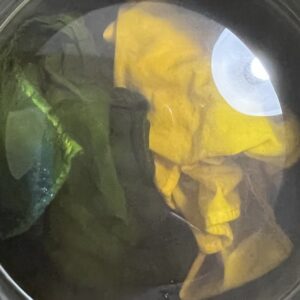Mordant Monday: Pokeberry dyeing without a mordant
This Mordant Monday, I want to share a little bit about my pokeberry dye adventure this past week. Those of you who know me know that I was trained to mordant nearly everything (exception: indigo). Not mordanting something that needs a mordant usually elicits a shocked, silent, but oh-so-judgey raised eyebrow, so this post is a stretch for me. The interesting thing about pokeberries is that it’s possible to get a brilliant color by using wool yarn and white vinegar. No alum mordant is used in this technique. And vinegar is not normally considered a mordant. So here we are. … Read more










